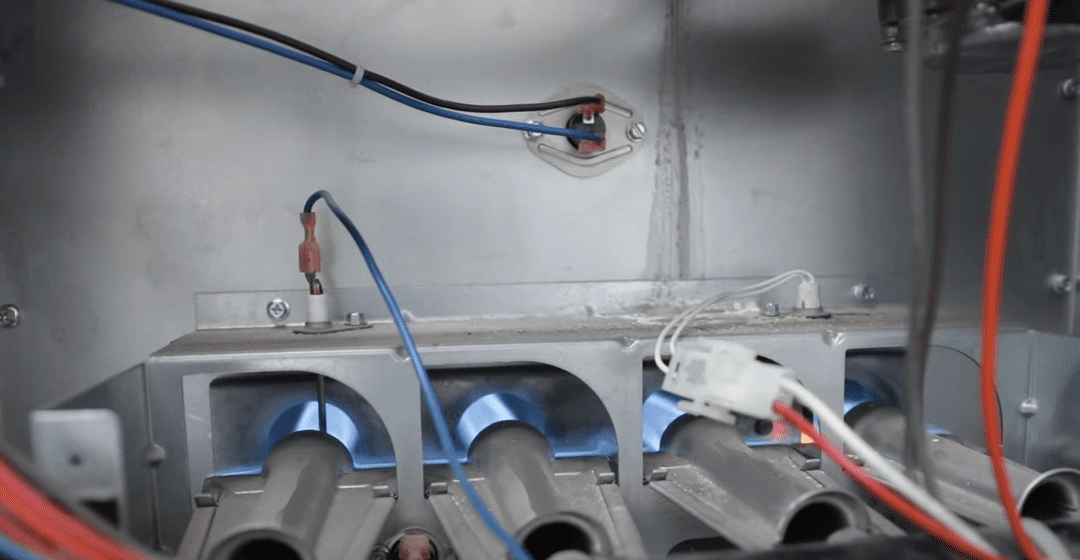Heater Not Working? Heater Blowing Cold Air? No Problema!
Heater Not Working? Furnace Blowing Cold Air? Heat Not Turning On?
Lots of people in San Antonio & Austin TX are asking that question right now. “Why is my heater blowing cold air?” or “Why is my furnace not heating up?”
Here are a few simple steps to check out your heater or furnace problems without a professional. If these don’t work, then you can give Air & Plumbing Today a call for a fast affordable heater repair service in San Antonio, Austin or Lakeway areas.
“What’s the difference between a heater and a furnace?”
Answer: A heater uses electricity to produce heat. A furnace uses natural gas to create heat.
Why Your Heater Isn’t Working (And How to Troubleshoot – Step by Step)
A broken heater in winter is more than just cold — it can cause frozen pipes, water damage, or even harm your house. Here’s an easy-to-follow guide to get your heat working again. Try these steps in order before calling a pro.
Step 1: Check Your Thermostat
Most “broken” heaters are just forgotten thermostats!
- Is the thermostat turned ON and set to “HEAT”?
- Is the screen lit up? (If it’s blank, keep reading.)
- Turn the temperature 5–10 degrees higher than the current room temperature.
- Wait 1–2 minutes. Still nothing? Turn it way up (like 80–90°F) to test.
Step 2: Fix a Blank/Dark Thermostat Screen
If the display is completely off:
A. Battery-powered thermostat? → Replace the batteries (usually AA or AAA).
B. Still dead? (Common in Texas & other swing-weather areas) Your AC drain line might be clogged. When it clogs, a pan under your AC unit fills up and there’s a safety switch kills power to the thermostat to prevent water from overflowing and causing water damage. → This usually needs a professional HVAC tech to unclog the drain with professional equipment.
Step 3: Gas Furnace – Is Gas Actually On?
Look for the gas valve within 6 feet of the furnace. It could look like:
- A small lever (often red or yellow)
- A little handle on a disk
- A small box
Rule of thumb:
- Handle parallel (║) with the pipe = ON (gas flowing)
- Handle perpendicular (⊥) to the pipe = OFF
→ Turn it parallel to open the valve.
Still no heat?
- Test another gas appliance (stove, water heater, fireplace).
- If nothing works, gas may be off at the meter or there’s an outage.
- Check the gas meter outside — the valve should also be parallel.
- Call your gas company (in San Antonio: CPS Energy) or check if you accidentally missed a bill.
Step 4: Find and Flip the Furnace Power Switch
There’s often a plain light-switch on or near the furnace (on the wall, ceiling, or even the furnace itself).
- Flip it to the opposite position, wait 3–5 minutes.
- People bump this switch all the time when moving boxes in the attic!
Step 5: Replace the Dirty Air Filter (Super Common Fix!)
A clogged filter can make the furnace shut off for safety.
- Find the filter (usually where air gets sucked into the furnace — big slot with a cover).
- Slide the old filter out.
- Look at the arrow on the side of the filter — it shows airflow direction.
- Buy the exact same size (written on the side).
- Put the new filter in with the arrow pointing toward the furnace. → Change filters every 1–3 months in winter.
Step 6: Still No Heat? It’s time to CALL A PRO. What a Pro Will Check:
One of the most common pro fixes is cleaning the flame sensor (a small metal rod inside the furnace).
Warning: Only do this if you’re comfortable — otherwise call a tech.
Basic idea:
- Turn off power and gas to the furnace.
- Remove the sensor (usually one screw).
- Gently clean the metal rod with steel wool or a knife edge.
- Reinstall and turn everything back on.
If you’ve tried all the steps above and still have no heat, it’s time to call a professional.
In San Antonio, you can call Air & Plumbing Today at 210-519-5959 in San Antonio or (512) 859-5959 or book online.
Stay warm — most heater problems are simple fixes!

Our Offices
3615 Tavern Oaks San Antonio TX 78247
2009 FM 620 N Lakeway, TX 78734
Call or Text Us
Email Us
Hours
24/7 EMERGENCY SERVICE
(A live person always answers)
Our Offices
3615 Tavern Oaks San Antonio TX 78247
2009 FM 620 N Lakeway, TX 78734
Call or Text Us
Email Us
Hours
24/7 EMERGENCY SERVICE
(A live person always answers)
By submitting this form and signing up for texts, you consent to receive messages from Air & Plumbing Today LLC at the number provided regarding your request, updates about appointments and services or promotions and offers, including messages sent by autodialer. Consent is not a condition of purchase. Msg & data rates may apply. Msg frequency varies. Unsubscribe at any time by replying STOP. Reply HELP for help. Privacy Policy & Terms


